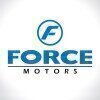Maintenance Trainee
20+ Maintenance Trainee Interview Questions and Answers

Asked in Desai Electronics

Q. What are star and delta connections?
Star and delta connections are two common methods used to connect three-phase electrical systems.
Star connection, also known as Wye connection, is formed by connecting all three phases together at a common point and connecting the other ends to the respective loads.
Delta connection, also known as Mesh connection, is formed by connecting the end of one phase to the start of the next phase in a circular loop.
Star connection provides a neutral point and is commonly used in power...read more

Asked in CIE Automotive

Q. What are the measuring instruments and why are they important?
Measuring instruments are tools used to quantify physical properties such as length, weight, temperature, and pressure.
Measuring instruments are essential for accurate and precise measurements in various fields such as engineering, science, and manufacturing.
Examples of measuring instruments include rulers, thermometers, scales, micrometers, and pressure gauges.
Using measuring instruments ensures consistency and reliability in measurements, which is crucial for quality contro...read more
Maintenance Trainee Interview Questions and Answers for Freshers
Asked in Krystal Engineering Services

Q. What is the color code for a 3-phase power supply?
The color code of 3-phase supply varies depending on the country and electrical standards.
In the United States, the color code for 3-phase supply is typically black, red, and blue.
In Europe, the color code is often brown, black, and gray.
Other countries may have different color codes, so it is important to consult local electrical standards.
The color coding helps identify the different phases and ensure proper electrical connections.

Asked in IDEMIA

Q. What is the color sequence of a three-phase system, and what is the degree difference between two phases?
A three-phase system typically follows a color sequence and has a 120-degree phase difference between each phase.
Common color sequence: Red, Yellow, Blue.
Phase A (Red) leads Phase B (Yellow) by 120 degrees.
Phase B (Yellow) leads Phase C (Blue) by 120 degrees.
Phase C (Blue) leads Phase A (Red) by 120 degrees.
This 120-degree separation helps in balanced load distribution.

Asked in HYUNDAI TRANSYS INDIA

Q. How to simple way time saving trouble shooting ? And what advantage?
The simple way to time-saving troubleshooting is to follow a systematic approach and use available resources.
Identify the problem and gather information
Use available resources such as manuals, diagrams, and online resources
Follow a systematic approach to eliminate possible causes
Test and verify the solution before implementing it
Advantages include faster resolution, reduced downtime, and improved efficiency

Asked in HYUNDAI TRANSYS INDIA

Q. How can technical knowledge be shared, and what are the advantages?
Technical knowledge sharing can be achieved through various means and can lead to improved efficiency and innovation.
Establishing a knowledge sharing culture within the organization
Encouraging cross-functional collaboration and communication
Providing training and development opportunities
Creating a centralized knowledge management system
Participating in industry events and conferences
Sharing best practices and lessons learned
Offering mentorship and coaching programs
Using soci...read more
Maintenance Trainee Jobs



Q. What is a transformer, and how does it work?
A transformer is an electrical device that transfers electrical energy between two or more circuits through electromagnetic induction.
Transformers are used to increase or decrease the voltage of an alternating current (AC) power supply.
They consist of two or more coils of wire, known as windings, that are wound around a core made of magnetic material.
The primary winding is connected to the power source, while the secondary winding is connected to the load.
When an alternating ...read more
Asked in Jbm Nmpl

Q. What is neutral voltage?
Voltage neutral refers to the point in an electrical system where the voltage is close to zero.
Voltage neutral is the reference point in an electrical circuit where the voltage is considered to be zero.
It is typically the midpoint between the positive and negative terminals of a power source.
In a balanced three-phase system, the neutral conductor carries the current resulting from the imbalance of the three phases.
The voltage neutral is important for ensuring proper functioni...read more
Share interview questions and help millions of jobseekers 🌟

Asked in Jbm Nmpl

Q. How can the power factor be improved?
Improving power factor involves reducing reactive power and increasing the ratio of real power to apparent power.
Install power factor correction capacitors to offset reactive power.
Avoid using inefficient or oversized motors and equipment.
Implement energy-efficient lighting systems.
Optimize the operation of power factor correction equipment.
Educate employees on energy conservation practices.

Asked in JIS School of Polytechnic

Q. What is an autotransformer?
An auto transformer is a type of transformer that has a single winding with multiple taps.
Auto transformers have a common winding for both primary and secondary coils.
They are used to step up or step down voltage levels.
Auto transformers are more efficient and compact compared to conventional transformers.
They are commonly used in power transmission and distribution systems.
Example: A 220V to 110V auto transformer can be used to step down voltage for appliances.
Example: A 110...read more

Asked in IDEMIA

Q. What are the differences between series and parallel connections?
Series connections have components in a single path, while parallel connections have multiple paths for current flow.
In series, current is the same through all components; in parallel, voltage is the same across all branches.
Example of series: Christmas lights; if one bulb fails, the entire string goes out.
Example of parallel: Household wiring; if one appliance fails, others can still operate.
In series, total resistance increases; in parallel, total resistance decreases.
Serie...read more

Asked in Cummins

Q. What are meter-in and meter-out circuits?
Meter in and meter out are terms used in hydraulic systems to control the flow of fluid.
Meter in refers to the flow of fluid into a hydraulic system.
Meter out refers to the flow of fluid out of a hydraulic system.
Both are used to control the speed and direction of hydraulic actuators.
Metering valves are used to regulate the flow of fluid in and out of the system.
Meter in and meter out are important for maintaining system stability and preventing damage to components.

Asked in Maruti Suzuki

Q. Q 1. What is reading of vernier caliper Q 2. Types of files
Reading of vernier caliper and types of files
The reading of a vernier caliper is a measurement technique used to determine the precise distance between two points.
It involves reading both the main scale and the vernier scale to obtain an accurate measurement.
Types of files include flat files, round files, half-round files, needle files, etc.
Each type of file is designed for specific purposes, such as shaping, smoothing, or removing material.
For example, a flat file is used fo...read more

Asked in Yuto Printing and Packaging

Q. How do you troubleshoot technical machine problems and sensor issues?
To find technical machine problems and sensors, follow these steps:
Start by gathering information about the symptoms and issues reported by the machine operators.
Perform a visual inspection of the machine to identify any visible signs of damage or malfunction.
Use diagnostic tools and equipment to check the machine's sensors and components for proper functioning.
Analyze error codes or fault logs to pinpoint specific sensor or technical issues.
Conduct tests and measurements to ...read more

Asked in CIE Automotive

Q. What is TPM and what is its aim?
TPM stands for Total Productive Maintenance. Its aim is to maximize equipment effectiveness and minimize downtime.
TPM is a maintenance strategy that involves all employees in the organization
It aims to improve equipment reliability, reduce maintenance costs, and increase productivity
TPM involves proactive maintenance, operator involvement, and continuous improvement
Examples of TPM tools include autonomous maintenance, planned maintenance, and quality maintenance
TPM also focus...read more

Asked in CIE Automotive

Q. What is poka-yoke? Explain it.
Pokayoke is a Japanese term for mistake-proofing. It is a technique used to prevent errors in a process.
Pokayoke involves designing a process or product in a way that makes it impossible to make a mistake.
It can be achieved through the use of sensors, alarms, or physical barriers.
Examples of pokayoke include car keys that cannot be removed unless the car is in park, or a phone charger that only fits into the charging port one way.
Pokayoke helps to improve quality, reduce wast...read more

Asked in IDEMIA

Q. What is the purpose of a neutral wire?
The neutral wire completes an electrical circuit by providing a return path for current, ensuring safety and proper functioning.
The neutral wire carries current away from the load back to the power source.
It is typically color-coded white or gray in electrical systems.
In a balanced system, the neutral wire helps maintain voltage levels.
Example: In a household circuit, the neutral wire allows appliances to operate safely by returning excess current.

Asked in Tata Motors

Q. How do you replace a broken piston rod?
To change a broken piston rod, the engine must be disassembled and the damaged rod removed and replaced.
Disassemble the engine
Remove the damaged piston rod
Replace with a new piston rod
Reassemble the engine
Test the engine for proper function

Asked in Tata Motors

Q. Define pneumatic and hydraulic cylinders.
Pneumatic or hydraulic cylinder is a mechanical device that uses compressed air or fluid to produce force in a linear motion.
Pneumatic cylinders use compressed air to generate force while hydraulic cylinders use fluid.
They are commonly used in industrial machinery and equipment.
Pneumatic cylinders are often used in robotics and automation.
Hydraulic cylinders are used in heavy machinery such as cranes and excavators.
Both types of cylinders have a piston that moves in a linear ...read more

Asked in Turbo Energy

Q. What are the basics of a maintenance team interview?
The maintenance team ensures equipment reliability through regular inspections, repairs, and preventive measures.
Conduct regular inspections to identify potential issues before they escalate.
Perform routine maintenance tasks, such as lubricating moving parts and replacing worn components.
Utilize a maintenance management system to track work orders and equipment history.
Implement preventive maintenance schedules to minimize downtime and extend equipment lifespan.
Collaborate wi...read more

Asked in Kinetic Engineering

Q. How would you troubleshoot a broken machine?
Diagnosing and fixing a breakdown machine involves systematic troubleshooting and effective repair strategies.
Identify the symptoms: Listen for unusual noises or check for error codes.
Inspect power supply: Ensure the machine is receiving adequate power.
Check mechanical components: Look for worn or damaged parts, such as belts or bearings.
Review maintenance logs: Analyze past issues to identify recurring problems.
Test individual components: Use multimeters or diagnostic tools ...read more

Asked in Tata Motors

Q. Are you familiar with the SAP system?
Yes, SAP system is a widely used enterprise resource planning software.
SAP stands for Systems, Applications, and Products in Data Processing
It is used for managing business operations and customer relations
It includes modules for finance, human resources, supply chain management, and more
Many companies use SAP, including Coca-Cola, IBM, and Nestle

Asked in Kinetic Engineering

Q. Starters and Its application
Starters are devices that initiate the operation of electric motors, ensuring smooth and safe startup.
Starters protect motors from overload and short circuits.
Types include Direct-On-Line (DOL), Star-Delta, and Soft Starters.
DOL starters are simple and used for small motors.
Star-Delta starters reduce starting current for larger motors.
Soft starters provide gradual ramp-up of motor speed.

Asked in Force Motors

Q. What is a sensor?
A sensor is a device that detects and responds to physical stimuli, converting them into signals for monitoring or control.
Sensors can measure temperature, pressure, light, and motion.
Examples include thermocouples for temperature and accelerometers for motion.
They are widely used in automation, robotics, and environmental monitoring.
Sensors can be analog or digital, depending on the type of output they provide.

Asked in Tata Motors

Q. What is a transformer?
A transformer is an electrical device that transfers electrical energy between circuits through electromagnetic induction.
Transforms voltage levels: Steps up or steps down voltage for efficient power transmission.
Consists of primary and secondary coils: The primary coil receives input voltage, while the secondary coil delivers output voltage.
Used in power distribution: Essential for transmitting electricity over long distances, reducing energy loss.
Example: A step-down transf...read more
Interview Questions of Similar Designations
Interview Experiences of Popular Companies






Calculate your in-hand salary
Confused about how your in-hand salary is calculated? Enter your annual salary (CTC) and get your in-hand salary


Reviews
Interviews
Salaries
Users










